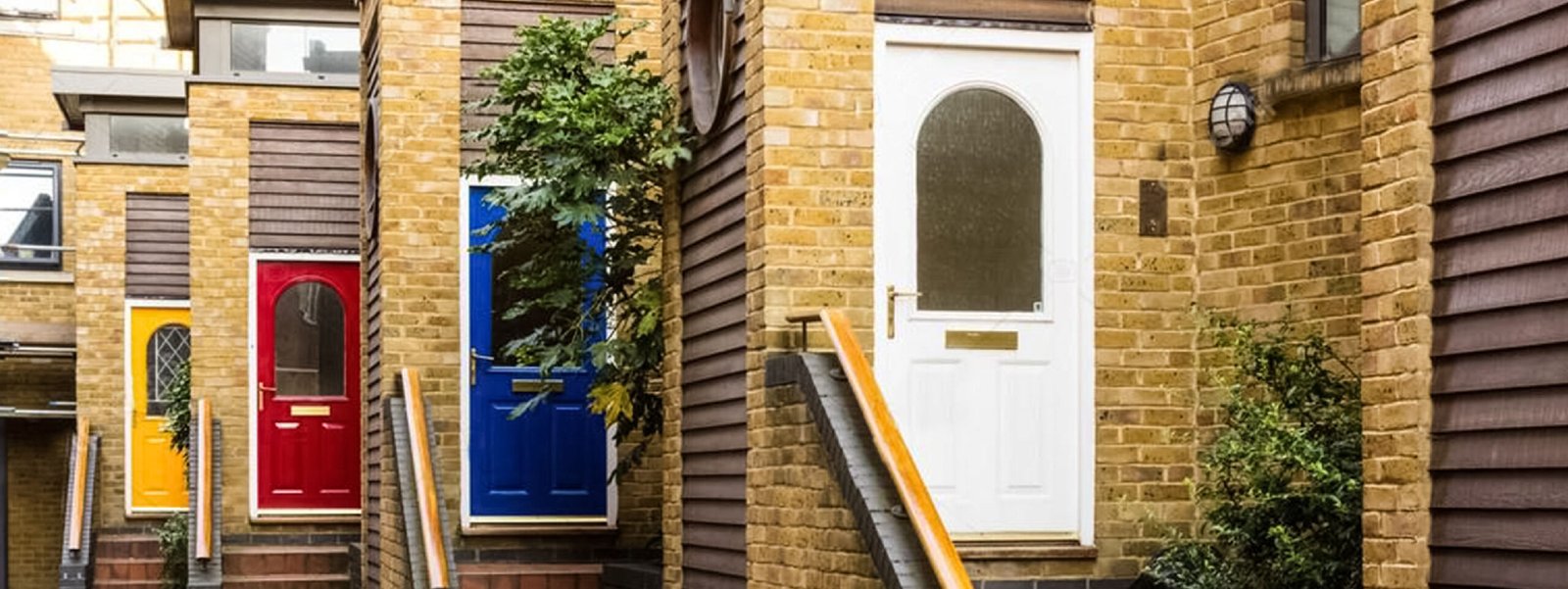Table of Contents
How to Paint a UPVC Door Yourself
A Step by Step Guide on How to Paint a UPVC Door


As professional spray painters, we are often asked many questions about painting a uPVC door and how to paint a uPVC door. Therefore, we have put together this helpful guide to answer all the common questions surrounding painting uPVC doors.
In addition, our step by step guide, filled with valuable tips, will assist you in achieving the best possible finish should you choose to take on the task of painting your uPVC door yourself.
1. Popular Questions about Painting UPVC Doors:
Can you paint uPVC doors? Yes, UPVC doors can be painted.
Can you paint composite doors? Yes, composite doors can be painted.
Can you paint PVC doors? Yes, PVC doors can be painted.
Can you paint uPVC front doors? Yes, UPVC front doors can be painted.
Can you paint uPVC doors and windows? Yes, UPVC doors and windows can be painted.
A PVC / Composite / uPVC door has to be painted the right way, and the same applies to uPVC windows. You cannot use the same method when painting your interior walls.
2. Should You Paint A UPVC Door?
Although uPVC doors were not designed to be painted, there are methods to paint them. Refreshing your door will add value and kerb appeal to your property. It does not matter if you have white uPVC, brown uPVC or any other colour for that matter, the painting process remains the same.
It is nearly impossible to achieve a perfect finish by hand, Painting a uPVC door can be done by yourself. Follow our simple steps on how to do so, or you can hire a professional to paint your uPVC door for you.
One thing is sure; painting your front door is far cheaper, by up to 75% than replacing your uPVC door.
3. How to Paint a UPVC Door Yourself
If you want to paint your uPVC door yourself, we highly recommend reading about uPVC Paint before starting your project.
Keep In Mind
Preparation is vital whether you’re painting a uPVC door yourself or hiring a professional. It is the most crucial part of the process!
If you want to achieve a good finish, you must take the time to prepare your surface carefully and adequately. Failure to do so will result in a bad paint job and potentially ruin the look of your door.
TOP TIP
Try to paint your door in warm and dry conditions; this isn’t a suitable DIY task to take on during our winter weather.
REMEMBER
You want to paint the most smooth surface without anything getting in the way or stopping your painting flow.
4. What Do I Need To Paint A UPVC Door?
With any painting project, time is of the essence. You want to ensure that you have the necessary equipment on hand so that you can begin painting as soon as the time and weather allows. The following is a comprehensive checklist of everything you will need, so that the process can be as smooth as possible.
5. Equipment List | Tools & Materials
Vacuum with
Brush Head
Paint
Roller
2.5 inch Paintbrush
Masking
Tape
Step
Ladder
Sponge
Soapy
Solution
Sandpaper
Dust
Sheets
Face
Mask
Primer
Paint
Vacuum with
Brush Head
Paint Roller
2.5 inch
Paintbrush
Masking
Tape
Step
Ladder
Sponge
Soapy
Solution
Sandpaper
Dust
Sheets
Face Mask
Primer
Paint
Vacuum with
Brush Head
Paint Roller
2.5 inch
Paintbrush
Masking
Tape
Step
Ladder
Sponge
Soapy
Solution
Sandpaper
Dust
Sheets
Face
Mask
Primer
Paint
6. Step-by-Step Process | How-To
Remove all door furniture – remove anything that you can such as doorknobs, knockers, letterboxes. This is to provide you with a nice flat surface to paint. If any door furniture cannot be removed, then use the masking tape to cover it completely, including any edges.
TOP TIP – try to paint your door in warm and dry conditions; this isn’t a suitable DIY task to take on during our winter weather.
Clean your uPVC door, door frame and surrounding area – Use a brush to remove and sweep away any dust, cobwebs and other particles from the door.
TOP TIP – wash your door with warm soapy water or wipe down with methylated spirits to remove any residue.
Sanding – you will find mixed messages with this step; some experts say you don’t need to sand your surface, and some say that you do.
What is essential to know is that lightly sanding the exterior surface with fine sandpaper allows you to create a key for the Paint to adhere. Therefore, if you want your efforts to last long-term, we recommend that you sand the surface of your door. But, of course, as professionals, we always do.
Ensure that you wear a mask when sanding as harmful particles can be released from the uPVC door.
TOP TIP 1 – Do not use rough sandpaper or rub too hard as you will end up with scratches that will show through the Paint.
TOP TIP 2 – Ensure that you pay particular attention to any window frames within the door.
Protect – Mask off any areas such as glass panels within the door and any door furniture that has not been removed. Cover and protect surrounding areas that are not being painted.
Select the Correct Paint for UPVC Doors – You must purchase a paint that is made for uPVC. Some paints suggest that you do not need a primer, however as professional door sprayers, we recommend you prime your door.
Priming your door first allows your selected colour’s final coat to adhere better to the surface. In most cases, you need one coat of primer. However, you must wait for the primer to dry completely to know if you need a second coat.
TOP TIP 1 – Before applying your topcoat, wait a few days for the primer to fully ‘cure’ to avoid any cracking later.
TOP TIP 2 – Rather than exterior gloss or satinwood for the paint finish/topcoat, we personally recommend using acrylic or polyurethane-based Paint. This type of Paint is flexible and has better expansion properties, so it will help avoid any cracking later.
Select the correct tools – If you are not applying the Paint via spraying or using an air gun, it is very challenging to achieve a smooth, professional finish when painting a uPVC door by hand.
You will likely see brush marks and ridges once the Paint has dried; if you do use a brush, make sure it is of good quality, as the last thing you want to see is hairs from your paintbrush trapped in the Paint.
We recommend that you use a foam roller, these have rounded edges that allow you to paint flat areas and grooves without leaving overlap paint marks. Using a roller will minimise any marks and bumps as it spreads a thinner coat of paint.
A great way to avoid brush or roller marks is to paint following the direction of the grain on the door. Each part/panel may have a different direction, so it is important that you pay attention to these details
TOP TIP 1 – Take your time painting and paint on a warm day. If it is too hot outside, the Paint will dry too quickly, which will affect any chance of a smooth finish. Likewise, if it is too cold, the Paint will not dry fast enough, leaving more opportunities for it to be scuffed.
Drying – This should be the easiest step as all you have to do is make sure that no one or nothing touches the paintwork until it has fully cured and dried.
7. Professional Spray Painters
Another method of refreshing and revitalising your door is by Spray Painting your UPVC Door. Achieving a perfect coat and finish, with long-lasting results and paintwork guaranteed for ten years.
You will have the ability to select from a range of colours and finishes to suit your style find out more.
For further information or a free quote, get in touch with one of our friendly team members, simply call the number below or fill in your details and we will give you a call.
Get Your Free Quote
Call one of our friendly team members
or fill in the quick short form below and we’ll be in touch to provide a free no-obligation quote.















